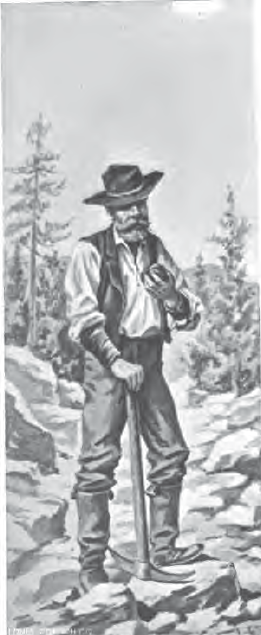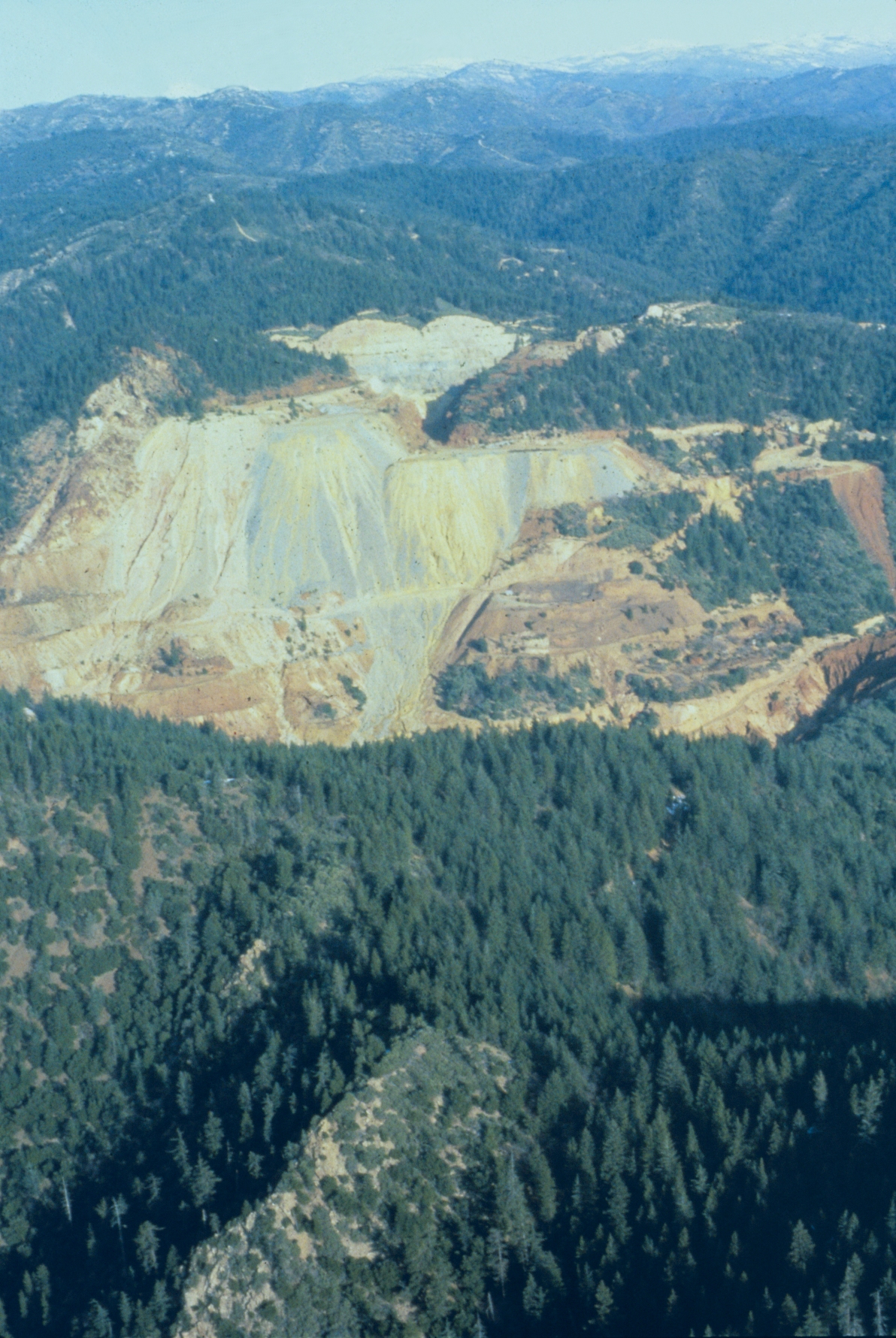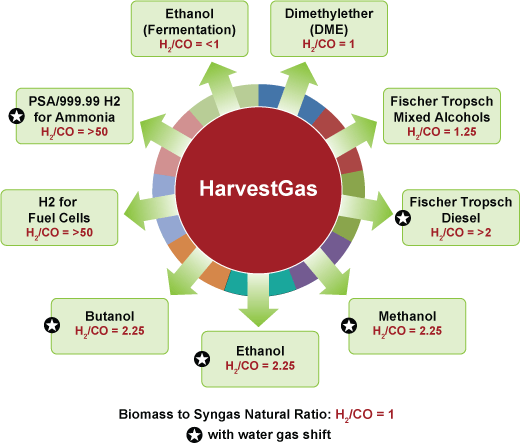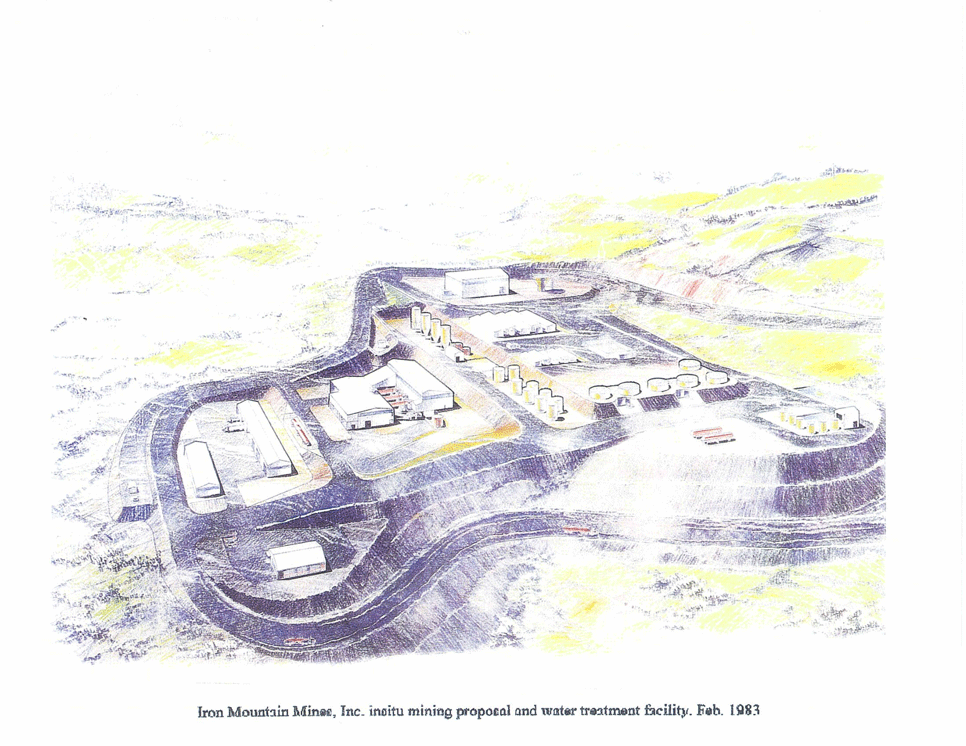T.W. ARMAN'S ORIGINAL PLAN FOR RESERVOIR LOCATIONS ON IRON MOUNTAIN. (CLICK ON TEXT FOR DOWNLOAD)
T.W. Arman, owner; owner of the properties, mines, and hydropower.
PRODUCTION OF CARBON NANOTUBES FROM BIOMASS AND HAZARDOUS WASTE SOLUTION COMBUSTION!
DISCOVERY! - POWER BREAKTHROUGH! - POWER BREAKDOWN!
________________________________________________________________________________
University of California Davis Professor Ting Guo discovers Iron nano-catalysts (Fe-Al-Ni) catalyst for Fischer-Tropsch reaction and converts carbon dioxide from air to carbon nano-tubes.
"One thing Fe is relatively good at is catalyzing Fischer-Tropsch synthesis of liquid fuels from syngas (CO + H2), which happens at 300 C or so. It is possible that we can convert your iron into materials good for catalyzing FTS, which can be used after methane and CO2 are converted to syngas using Ni catalysts at 900 C. We need to test to see if the iron catalysts from your waste is good for this purpose. Mixing them with carbon paste is an option. Because the reaction temperature is relatively low, we may not need to use nanotubes to anchor the catalysts. " Ting Guo, November 21, 2008
§ 2386. ...certain organizations
"Mercury, gold, copper, lead, diamonds and oil: by 1900 the Rothschilds occupied a remarkable position in the world market for non-ferrous metals, precious stones and petroleum" [Ferguson op cit]La rennassiance (et echecs) des Rothschilds francaises:
The rise and fall of IMETAL
Roger Moody, Nostromo Research, London, July 2003.
Copyright: Nostromo Research and Philippine Indigenous Peoples Links
See also The Rothschild Files (3 August 2003)
Christ Statue and Spiritual Sanctuary
GREAT PAST AND BRIGHT FUTURE OF IRON MOUNTAIN MINE!
California journal of mines and geology, Volume 11
Report of State Mineralogist, 1892, Page 46
The Lost Confidence Mine is situated on Iron Mountain , near the summit of the range, 8 miles north of Shasta, at an elevation of 2,400 feet. The ore deposits occur in a body of porphyry of varying composition. A mile west of the mine slate replaces the porphyry, and extends west to the Gladstone Mine. An arm of the porphyry projects a little west of south, across the head of Whisky Creek, forming a V-shaped area.
The porphyry in the gulches about Iron Mountain is undecomposed, exhibiting quarters with crystalline faces. A half mile above the mine the porphyry has a fluted or columnar cleavage, resembling the columnar structure often seen in basalt. The ore lies in a very fine quartz porphyry, which changes at times into a chloritic felsite or petrosilex. The chlorite is present in large scales, probably representing crushed crystals.
A heavy iron gossan outcrops in great projecting masses just above the workings of the Lost Confidence Mine, on Slick Rock Creek, and extends up the mountain, forming its crest fully 1,000 feet above. This important mineralized belt extends about 10 miles northeasterly, across Spring and Boulder Creeks to Squaw Creek. A number of valuable silver mines are located on it. The Lost Confidence Mining Company owns about a mile of the deposit, beginning at Slick Rock Creek. One of the most interesting and valuable properties owned by this company is a body of pure hematite ore, covering about 40 acres. No development has yet been made, but every advantage exists for a great industry here. The iron is apparently inexhaustible, very pure, and with an inclined tramway built the Sacramento River could be cheaply place on the cars. The iron is separated from the silver vein by a dike of porphyry 300 feet wide. There are two ledges or deposits carrying silver, separated by a stratum of decomposed quartz porphyry 1 to 3 feet wide, and dipping to the northwest. The foot wall or silver vein is 10 to 30 feet thick. It consists of copper sulphurets, 80 to 150 ft. thick. It is worked for both gold and silver, containing them in the proportion of 10 silver to 1 gold. A large amount of native copper is saved every month by allowing the water which runs from the mine to pass through a flume several hundred feet long filled with scrap iron.
California journal of mines and geology, Volume 12-13
Report of State Mineralogist, 1894, Page 337
Iron Mountain Mine. – It is 8 miles N.E. of Shasta, on Iron Mountain , and comprises 1 mile square of ground, including three claims. The course of the mineral body is N.E. and S.W. and it can be traced for over 2 miles. It is apparently the iron head or gossan cause by bevy mineral springs permeating the fissure and surrounding rocks. The mass has been cross-cut in places over 500 ft. without reaching its boundaries. As depth is reached, the ferruginous and cupriferous oxidized mass changes to massive sulphides, sometimes of a steely nature and hardness. Tunnels have been run in, on what is taken for one of the walls, a distance of 500 ft., and a series of parallel cross-cuts made every 50 ft.; some of these are several hundred feet in length, all within the ore belt. The works from the upper tunnel have been entirely honey-combed and the ore sent into the mill. Near the surface the ore carries iron, copper, silver, and gold, said to yield in the mill 40 oz. silver and $1 gold. As depth is attained the percentage of gold increases. The reduction works include a fine 20 stamp dry-crushing mill and Bruckner furnace, furnace, 12 amalgamating pans, and 6 settlers, with a capacity of 75 tons per day. Has lately changed owners.
These injuries are a continuing negligent imminent hazard with felonious unlawful detainer and breach of warrantee for patent title from President Abraham Lincoln, May 1st, 1862; and breach of patent title from Governor Newton Booth, January 4th, 1875.
Economist Llewellyn Rockwell has written, "Private property is the real human right, and the foundation of all freedom. If a church can't own its building, there can be no freedom of religion. If a newspaper can't own its newsprint, there can be no freedom of the press. If there is no private land there can be no freedom of speech."
The subject of wetlands protection has offered the federal government a pretext for an unprecedented assault upon private property. Congressman Don Young (R-AK) has cogently summarized the issue:
The word Minnesota comes from the Dakota name for the Minnesota River : Mnisota . The root mni (also spelled mini or minne ) means, "water". Mnisota can be translated as sky-tinted water or somewhat clouded water .
Township of Minnesota; Parts in 32 and 33N, 5 and 6W of Mount Diablo meridian "LAND OF SKY BLUE WATER"
FERC EXEMPTION ID #F 1967-34 WATER RECLAMATION PLAN
Purpose.
The State policies described in Water Code Sections 461 and 13510 are in the best interest of Iron Mountain Mine and the Township of Minnesota . The majority of jurisdictions in Shasta County have adopted measures to promote water reclamation. This chapter is necessary to protect the common water supply of the region which is vital to public health and safety, and to prevent endangerment of public and private property. Shasta County is highly dependent on limited domestic water for domestic, agricultural and industrial uses. The reliability of the supply of domestic water is uncertain. By developing and utilizing reclaimed water, the need for exportable water can be eliminated. In light of these circumstances, certain uses of potable water may be considered unreasonable or to constitute a nuisance where reclaimed water is available or production of reclaimed water is unduly impaired. Reclaimed water would be more readily available in seasons of drought when the supply of potable water for nonessential uses may be uncertain.
Water reclamation policy.
It is the policy of the Iron Mountain Mine and the Township of Minnesota that reclaimed water shall be used within the jurisdiction wherever its use is economically justified, financially and technically feasible, and consistent with legal requirements, preservation of public health, safety and welfare, and the environment.
Definitions.
The following terms are defined for purposes of this chapter:
A. “Agricultural purposes” include the growing of field and nursery crops, raw crops, trees, and vines and the feeding of fowl and livestock.
B. “Artificial lake” means a human-made lake, pond, lagoon, or other body of water that is used wholly or partly for landscape, scenic or non-contact recreational purposes.
C. “Commercial office building” means any building for office or commercial uses with water requirements which include, but are not limited to, landscape irrigation, toilets, urinals, and decorative fountains.
D. “Reclaimed water distribution system” means a piping system intended for the delivery of reclaimed water separate from and in addition to, the potable water distribution system.
E. A “greenbelt area” includes, but is not limited to, golf courses , cemeteries, parks and landscaping.
F. “Industrial process water” means water used by any industrial facility with process water requirements which include, but are not limited to, rinsing, washing, cooling and circulation, or construction.
G. “Off-site facilities” means water facilities from the source of supply to the point of connection with the on-site facilities, normally up to and including the water meter.
H. “On-site facilities” means water facilities under the control of the owner, normally downstream from the water meter.
I. “Potable water” means water which conforms to the Federal, State and local standards for human consumption.
J. “Reclaimed water” means water which, as a result of treatment of wastewater, is suitable for a direct beneficial use or controlled use that would not otherwise occur (see Water Code Section 13050(n)).
K. “Water discharge” means water deposited, released, or discharged into a sewer system from any commercial, industrial, or residential source which contains levels of any substance or substance which may cause substantial harm to any water treatment or reclamation facility or which may prevent use of reclaimed water authorized by law.
Water reclamation master plan.
A. General. Upon adoption of this chapter, the Township shall prepare and adopt by resolution, a water reclamation master plan to define, encourage, and develop the use of reclaimed water within its boundaries. The master plan shall be updated not less often than every five years.
B. Contents of the Reclamation Master Plan. The master plan shall include, but not be limited to, the following:
1. Plants and Facilities. Evaluation of the location and size of present and future reclamation treatment plants, distribution pipelines, pump stations, reservoirs, and other related facilities, including cost estimates and potential financing methods;
2. Reclaimed Water Service Areas. A designation, based on the criteria set forth in this chapter, of the areas within the Township that can or may in the future use reclaimed water in lieu of potable water. Reclaimed water uses may include, but are not limited to, the irrigation of greenbelt and agricultural areas, filling of artificial lakes, and appropriate industrial and commercial uses;
3. Designate Tributary Areas. For each water reclamation facility identified in the master plan, designate proposed tributary areas. Within such areas, discharges to the sewage system shall be subject to permitting, monitoring and control measures to protect public health, safety and public and private property;
4. Quality of Water to be Reclaimed. For each water reclamation treatment facility, evaluate water quality with respect to the effect on anticipated uses of reclaimed water to be served by each treatment facility. Evaluate sources of waste discharge and sewer inflow that may, directly or cumulatively, substantially contribute to adverse water quality conditions (including but not limited to total dissolved solids, sodium, chloride and boron) in reclaimed water;
5. Tributary Protection Measures. Develop recommended control measures and management practices for each designated tributary area to maintain or improve the quality of reclaimed water. Such control measures may include capital improvements to the sewer collection system and waste discharge restrictions for industrial, commercial and residential discharges;
6. Mandatory Reclaimed Water Use. For each reclaimed water service area, evaluate whether greenbelt irrigation, agricultural irrigation, commercial office buildings, filling of artificial lakes, or industrial processes shall be limited to the use of reclaimed water. As appropriate, mandate construction of reclaimed water distribution systems or other facilities in new and existing developments for current or future reclaimed water use as a condition of any development approval or continued water service, if future reclamation facilities are proposed in the master plan that could adequately serve the development. Identify resources and adopt measures to assist water users in the financing of necessary conversions;
7. Rules and Regulations. Establish by resolution, general rules and regulations governing the use and distribution of reclaimed water;
8. Public Awareness Program. Establish a comprehensive water reclamation public awareness program;
9. Coordination Among Agencies. An examination of the potential for initiating a coordinated effort between the Township and other regional agencies to share in the production and utilization of reclaimed water.
Procedures.
A. Existing Potable Water Service.
1. Preliminary Determination. Based upon the master plan, upon the designation of each reclaimed water service area or the commencement of the design of new reclaimed water facilities, the Township shall make preliminary determinations as to which existing potable water customers shall be converted to the use of reclaimed water. Each water customer shall be notified of the basis for a determination that conversion to reclaimed water service will be required, as well as the proposed conditions and schedule for conversion.
2. Notice. The notice of the preliminary determination, including the proposed conditions and time schedule for compliance, and a reclaimed water permit application shall be sent to the water customer by certified mail.
3. Objections – Appeals. The water customer may file a notice of objection with the Township within 30 days after of any notice of determination to comply is delivered or mailed to the customer, and may request reconsideration of the determination or modification of the proposed conditions or schedule for conversion. The objection must be in writing and specify the reason for the objection. The preliminary determination shall be final if the customer does not file a timely objection. The Township Manager or his designee, shall review the objection with the objector, and shall confirm, modify or abandon the preliminary determination.
B. Development and Water Service Approvals.
1. Conditions. Upon application by a developer, owner or water customer (herein referred to as “applicant”) for a tentative map, subdivision map, land use permit, or other development project as defined by Government Code Section 65928 the Township staff shall review the master plan and make a preliminary determination whether the current or proposed use of the subject property is required to be served with reclaimed water or to include facilities designed to accommodate the use of reclaimed water in the future. Based upon such determination, use of reclaimed water and provision of reclaimed water distribution systems or other facilities for the use of reclaimed water, and application for a permit for such use may be required as a condition of approval of any such application, in addition to any other conditions of approval.
2. Alterations and Remodeling. On a case-by-case basis, upon application for a permit for the alteration or remodeling of multifamily, commercial or industrial structures (including, for example, hotels), the Township staff shall review the master plan and make a preliminary determination whether the subject property shall be required to be served with reclaimed water or to include facilities designed to accommodate the use of reclaimed water in the future. Based upon such determination, use of reclaimed water and provision of reclaimed water distribution systems or other facilities for the use of reclaimed water, and application for a permit for such use, may be required as a condition of approval of the application.
3. Notice of Determination. A notice of the basis for the preliminary determination, proposed conditions of approval and schedule for compliance shall be provided to the applicant prior to approval of the development application.
C. Reclaimed Water Permit Process. Upon a final determination by the Township Manager that a property shall be served with reclaimed water, or adoption of a condition of development approval requiring use or accommodation of the use of reclaimed water, the water customer, owner or applicant shall obtain a reclaimed water permit.
1. Permit Conditions. The permit shall specify the design and operational requirements for the applicant's water distribution facilities and schedule for compliance and shall require compliance with both the California Department of Health Services Wastewater Reclamation Criteria (see California Code of Administrative Regulations, Title 22), and requirements of the Regional Water Quality Control Board.
2. Plan Approval. Plans for the reclaimed and potable water distribution systems for the parcel shall be reviewed by the Township Manager or his designee and a field inspection conducted before the permit is granted.
3. Iron Mountain mine joint venturers to manufacture sodium sulfur (Nas) and zinc air batteries, Cadmium sulfide and telluride solar cells.
4 Iron Mountain mine joint venturers to construct superconducting supergrid.
5.Iron Mountain mine joint venturers to precast seismically engineered containment structures, schools, hospitals, and housing.
6. Permit Issuance. Upon approval of plans, the permit shall be issued. Reclaimed water shall not be supplied to a property until inspection by the Township Manager or his designee determines that the applicant is in compliance with the permit conditions.
D. Temporary Use of Potable Water. Upon the approval of the Township Manager or his designee, potable water may be made available temporarily. Before the applicant receives temporary potable water, a water reclamation permit must be obtained for new on-site distribution facilities. Prior to commencement of reclaimed water service, an inspection of the on-site facilities will be conducted to verify that the facilities have been maintained and are in compliance with the reclaimed water permit and current requirements for service. Upon verification of compliance, reclaimed water shall be served to the parcel for the intended use. If the facilities are not in compliance, the applicant shall be notified of the corrective actions necessary and shall have at least 30 days to take such actions.
E. Reclaimed Water Rate. The rate charged for reclaimed water shall be established by resolution of the Township.
| The Colbert Report | Mon - Thurs 11:30pm / 10:30c | |||
| Nicholas Kristof | ||||
|
||||
| The Colbert Report | Mon - Thurs 11:30pm / 10:30c | |||
| Stephen's Angry Mob Will Crush AIG | ||||
|
||||
| The Colbert Report | Mon - Thurs 11:30pm / 10:30c | |||
| Move Your Money - Eugene Jarecki | ||||
|
||||
The "Spiritual Sanctuary" is to be located in Section 22, 33N6W MD, upon the "Owl" consolidated lode mining claims.
(The "Owl, Gold Bar, & Grey Squirrel" lode mining claims).
…to their and their use and behoof forever.
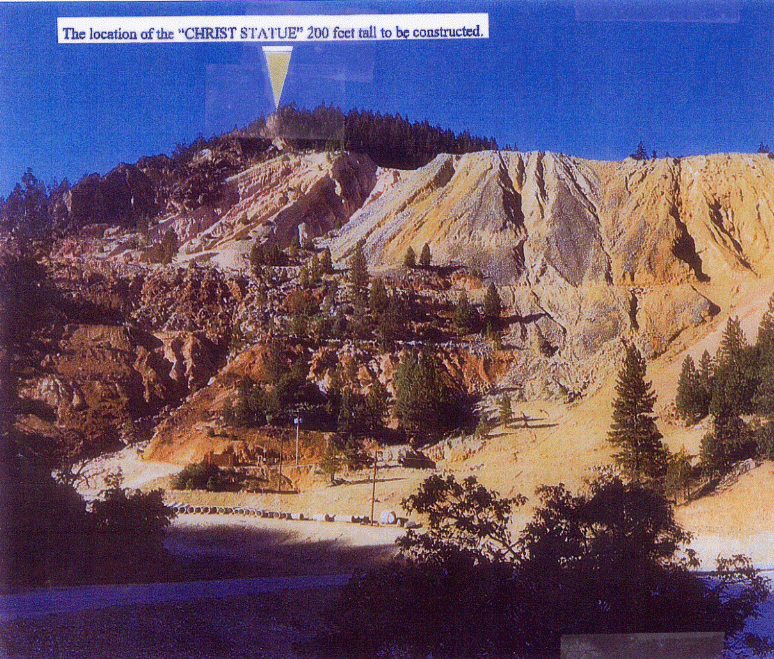
Iron Mountain During the 1890s when Mountain Copper Company owned Iron Mountain Mine, a company town named Iron Mountain was located on the mountain. It was perched on the mountainside near the mine shafts and included a one-story, 7-room cottage with two large brick fireplaces and a wide porch all around for the manager, three superintendent houses containing four or five bedrooms, a two-story, 16-room staff quarters' building a large mess and entertainment hall complete with dining room and kitchen, canteen, billiard room and music room, a hospital, approximately 25 family cottages, and two 16-room bunkhouses for the single men employees. Also on the property was a tennis court, a football field, and the Iron Mountain Post Office. In 1897, a fire destroyed many of the buildings. In 1922, the mine was abandoned but continued to operate intermittently until as late as 1963 when all mining operations ceased.
Matheson Matheson was established as a direct result of Iron Mountain Mine and served as the railroad terminus for the mine. A Southern Pacific Railroad siding operated at Matheson until 1951. Ore was hauled from the mine to this siding. In 1921, the rail line was replaced by the Iron Mountain Tramway (aerial). In 1953, the tramway was extended one additional mile from Matheson to Keswick. It operated intermittently into the 1970s. Remnants of it still exist.
The Matheson Post Office was established in 1922 and operated until 1962. Matheson Road exists off of Iron Mountain Road and is near the Chappie-Shasta OHV area.
The following excerpts are taken from the Iron Mountain Mine entry out of the book titled The Dictionary of Early Shasta County History by Dottie Smith
"...Originally worked as a gold mine, later silver, until the true wealth of the mine was discovered to be copper, iron, and sulphur...Discovered in the early 1860s by Charles Camden and William Magee. James Sallee became a 3rd partner when he discovered a silver vein. In 1884, Camden, Magee, and Sallee leased the mine to a Honolulu company who soon returned the property and equipment back to them. Camden, Magee, and Sallee again operated until 1894 when they sold to Mountain Copper Co. Ltd. who built (the next year) a smelter at Keswick and the Iron Mountain Railway, a 3-ft. gauge mountain mining railroad which connected the mine with the Keswick smelter and Southern Pacific tracks at Keswick. In 1898, 221,895 tons of ore were extracted from the mine. The smelter contained two blast furnaces and 80 open-roasting stalls where ore was heap roasted or burned in the open air to reduce the sulphur content, sometimes burning 350,000 tons at a time. Prior to the arrival of electricity, the smelter furnaces and train engines were fueled with wood supplied by a 75-man woodcutting crew who cut down almost all the trees between Keswick and Copley and with 20,000 cords floated downriver from the Flatwoods area by Buick & Wengler. Hydroelectric power arrived in 1901 via the Volta Powerhouse owned by Keswick Electric Power Company to operate the smelter furnaces. Water was pumped 4500 ft. from the Sacramento River through a 16" pipe near the mouth of Spring Creek with the help of a Corliss-Hamilton engine and a cornish plunger pump. The smelter became a major health and environmental hazard because it released huge volumes of poisonous sulphurous dioxide gasses into the air killing most of the vegetation it came in contact with. The company made little attempts to prevent the spread of the poisonous gasses resulting in Superior Court lawsuits which closed the smelter by court order in 1907. The company built a new smelter at Martinez, and in 1920, a 2½ mile ore-hauling aerial tramway from the Hornet Mine to another railroad siding at Matheson and began shipping ore via the railroad to the Martinez smelter for processing. A company town was perched on the hillside near the mine shafts and included a one-story, 7-room cottage with two large brick fireplaces and wide porch all around for the manager, three superintendent's houses containing 4 or 5 rooms, a 2-story, 16-room staff quarters' building, a large mess and entertainment hall which included a dining room and kitchen, canteen, billiard room, and music room, about 25 family cottages, and two 16-room bunkhouses for men. Also on the property was a tennis court and football field. In 1897 a fire destroyed the silver mill, a sawmill, all the stores, the office, the assay department, hospital, the mess and entertainment hall, plus a number of small buildings. But mining resumed and buildings were reconstructed. In 1922 the mine was abandoned. Reopened periodically until 1927. Gossan was extensively mined for gold from 1931 until 1941. Reforestation attempted after World War II when 2.6 million seedlings were planted but the acidic soil and slope instability rendered the project a failure. Underground mining ceased in 1956 and open-pit mining was undertaken at Brick Flat. All mining operations ceased in 1963. Sold to Stauffer Chemical Co. in 1967 who sold to Iron Mountains Inc. in 1976. Placed on the Environmental Protection Agency (EPA) National Priority List and/or the Top 10 Hazardous Site List in 1983 making it eligible as a Superfund cleanup site. Mine holdings include the Complex, Hornet, Lost Confidence, Mattie, No. 8, Old Mine, Brick Flat, and Richmond Mines (Brick Flat, Hornet and Richmond Mines were pyrite mines). The mine was responsible for the creation of the communities of Iron Mountain, Keswick, Matheson, and Taylor. Total copper output was +342,000,000 lbs. making it largest Shasta County producer. Major modifications and changes currently underway to make the mine environmentally safe. Mine was important to Shasta County's economy for 70 years."
Ore Reserves
Using the results of assays and information developed during drilling, drifting and mining of the various segments of the Iron Mountain ore body, geological ore reserves were developed for both the massive sulfide and disseminated ores by Mountain Copper Company. Reserves of the gossan ore were developed through the cooperation between engineers of Mountain Copper Company and Stauffer Chemical Company. Subsequent checks of these reserve figures have been made by Southwestern Engineering Company and Iron Mountain Mines, Inc. In addition, various Mountain Copper Company internal checks are evident. The result of the calculations and checks is the general agreement that there presently exists at Iron Mountain Mine roughly 12,000,000 tons of proven sulfide ore with minimum average grades of 1% copper, 2% zinc, 0.02 gold and 1.5 oz. silver. Probable gossan ore is estimated at 3,000,000 tons. The combined proven geological reserves amount to 15,050,000 tons of proven sulfide and gossan ore contained within an area of roughly 300 acres. These reserves represent tonnages presently remaining in the Hornet, Mattil, Richmond Extension and the unmined Brick Flat ore bodies. No recent reserve figures have been developed for the three magnetite bodies. Remaining in place tonnages for the Old Mine, Number 8, Confidence-Complex, Camden , busy Bee, Lone Star and Okosh massive sulfide bodies are listed in various data and reports received from Iron Mountain Mines. However, no reserve calculations for these deposits are available as backup. Limited backup assay data are available for the Camden and Okosh bodies. According to this information average copper grades for the Camden and Okosh are 1.01 percent and 3.43 percent respectively. No overall averages are readily available for the Old Mine, Number 8 and Confidence-Complex but general extension of adjacent data indicates average grades may approach one percent.
Tons of proven sulfide ore in place: 14,183,000; probable reserves 1,050,000
Tons of proven gossan in place 3,050,000; probable reserves 3,795,000
Grand Total in place 17,233,000; probable reserves 4,845,000
During 1950 and 1951, a 1,798 exploration drill hole was put down by the U.S.G.S. in the vicinity of a syncline on the southeast side of the Iron Mountain mine. Located at the approximate mine coordinates 2900 north, 3650 east passed through numerous rhyolite intervals of Balaklala formation throughout its entire length. Intermittent, broad to narrow bands of disseminated sulfides were present throughout the drill hole with some intervals containing slightly greater than one percent copper. Kaiser Engineers, 1981
Balance of Trade:
The proposal forecasts the elimination of imports of at least 50,000 tons of metals annually, resulting in a net adjustment to the current trade deficit of over $150 million dollars annually.
Current market and employment impact
The proposal is estimated to create approx. 1200 direct jobs and 800 indirect jobs.
Cautionary Disclosure: This is "forward-looking information about prospective results of operations, financial position or cash flows that is based on assumptions about future economic conditions and courses of action and that is not presented in the format of a historical balance sheet, income statement or cash flow statement ." Examples of financial outlooks include expected revenues, net income, earnings per share and R&D spending. Material facts have not been verified. Actual results may vary. These results are highly speculative. Readers should establish their own reasonable basis for these assumptions. Verbum Sap.
About Us | Contact Us |
